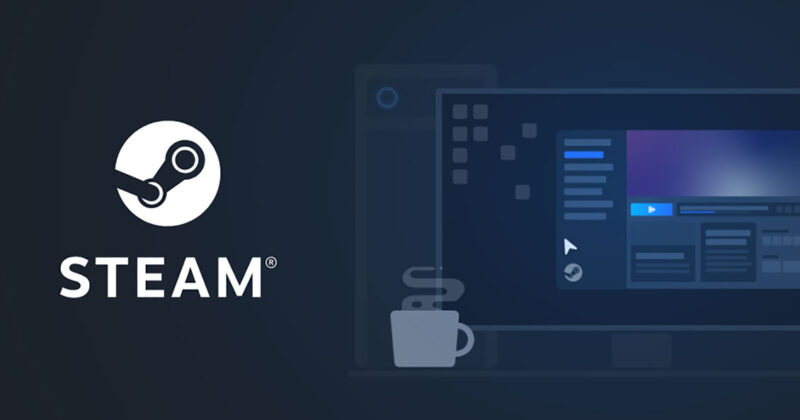Steam Remote Play is a feature that enables you to play games on a tablet, TV, phone, or another computer without having the game loaded on it. Steam Link lets you play the game on a different device while still using your main computer to host the session.
With this, you can play a game that demands higher-end performance on a device that won’t support it as long as the host computer can run the game.
Steam designed complete interfaces tailored for touch controllers so that it’s not unpleasant or impossible to play your PC games without keyboard support.
Article Contents
Why is Steam Remote Play controller not working
Quick Answer: Steam remote play controller is not working because of specific difficulties with the steam program or owing to difficulties with your connection.
There are some factors that can be stopping your Remote Play games from operating. For instance, ensure sure your computer is active and not unexpectedly shutting down at a time when you’re attempting to connect and play.
Whenever playing games with friends using the Steam Remote Play function, you may have come across occasions when the controller does not work.
Because of this difficulty, you would not be capable of playing your favorite games with your pals, and this may be pretty annoying.
While such difficulties might lead you to worry, we’ve got precisely the remedy for you in this tutorial.
Fix Steam Remote Play controller Not Working
Method 1: Reconnect your controllers
If you and a buddy are unable to play together because of a problem with the Steam Remote Play controller, the first thing you may do is reconnect your controllers. You may do that by just switching the power off and then on again.
Another thing to look for is a mismatch between the Inputs and the buttons on the controller. Whether they do not coincide, you may do so and then test if this addresses the problem.
Method 2: Verify settings
If Only Player 2 Cannot Play, you first have to verify whether the screen of the second player doesn’t really move while playing a game on Steam. Another issue to look for is sluggish or jerky communication.
If all of these difficulties occur, you need to navigate to the Settings tab in Steam. Access the Controller Settings menu by first selecting General Controller Settings and then clicking on that menu item.
Check whether the target controller setting support box is ticked. This option would have a checkmark next to it if it is selected. You must choose this option if it is not already selected.
Another method (if the one given above does not work) you should attempt to reconnect the controller. To do just that, all you have to do is switch the power off and on again.
Also, if you are Player 1, you need to verify your controller is not linked to the 1P side, particularly if you are using a mouse to play.
These were all of the remedies to the Remote Play Controller not functioning in Steam.
As you’ll see, you may remedy this issue fairly easy. All you need is a little perseverance and the methods outlined in this article.
Method 3: Check if controller is working
If your controller isn’t impacting the game, it could not be set appropriately on Steam.
You can’t use a controller with games that need raw input, so keep that in mind.
You may change your controller in Steam settings to guarantee it will operate throughout your Remote Play session.
-
Step 1: Click the “Steam” menu button at the top of Steam to open it.
-
Step 2: Tap “Controller.”
-
Step 3: Select “General Controller Settings.”
-
Step 4: Check the box next to the controller you’re using.
-
Step 5: Save your preferences and go to Steam.
Change Steam into Big Picture Mode by selecting the square icon to the left of the minimize option.
Try to utilize your controller in Big Picture Mode. It’s possible that it won’t function in Remote Play if it doesn’t work there.
In order to get your controller to function, you may need to upgrade the controller’s drivers, verify the game’s compatibility, or use an alternative port on your computer.
Method 4: Keep updating Your Clients
If Steam Link and Steam itself aren’t updated, Remote Play won’t operate. Try accessing the app store wherever you acquired the Steam Link app to check if updates are available. In Steam, go to the Steam menu and update “Check for Steam Client Updates.”
Method 5: Check Remote Play Support For The Game
Before everything, remember to check to see whether your game supports Remote Play. The issue will only persist if it isn’t supported.
Go to the game’s shop page and check the information on the right side to see if it enables Remote Play, which gadgets it can broadcast to, or whether it has Remote Play Together.
Method 6: Verify the Integrity of the Game Files
If you wish to play a game remotely, be sure that the host computer has the most recent version of the game and that it is functioning properly.
Launch the game on the pc and check sure it’s operating flawlessly. You may also check your files to ensure the game files aren’t faulty or damaged.
-
Step 1: Right-click the title in your Steam library.
-
Step 2: Select “Properties.”
-
Step 3: Select “Local Files.”
-
Step 4: Tap “Verify Integrity of Game Files.”
Allow Steam to complete the download and upgrade the game if necessary.
Method 7: Verify Your Credentials
Take care to ensure you’re logged into your Steam Link app and your Steam account on every platform. You must be on an identical account for Remote Play to operate.
Method 8: Verify Your Network
Using Remote Play effectively requires a substantial amount of bandwidth. Run a speed test on both devices to be sure you’re receiving the speed you anticipate.
If you aren’t, try disconnecting your router and modem for five minutes, then plugging them back in for five minutes and restarting your devices.
Method 9: Verify Minimum Requirements
Steam recommends a quad-core CPU for the host PC no matter what the games demand. You’ll likely achieve greater results with more contemporary CPUs with more cores.
Steam claims wireless N and AC networks, as well as powerline networks, may operate as long as the signal is strong, although a wired network is recommended.
The remote device requires a GPU that supports hardware-accelerated H264 decoding. Check your manuals to discover what your gadgets provide.
Method 10: Reconfigure Steam’s Options
To modify your Steam Remote Play settings:
-
Step 1: Launch the Steam client.
-
Step 2: Select “Settings” from the “Steam” menu.
-
Step 3: Select “Remote Play” from the drop-down menu.
-
Step 4: After that, choose “Advanced Host Options” and make the necessary modifications.
-
Step 5: Select “Advanced Client Options” to adjust client settings.
Under Remote Play, you have the opportunity to alter the “Fast” client streaming choices as well.
Under Client Options, restrict your resolution and make sure “Enable Hardware Decoding” is checked. To finish, click “OK.”
Choose “Dynamically alter capture resolution to optimize performance” from the Host Options menu. You should also have all the settings selected under “Enable hardware encoding.”
Method 11: Modify the Game’s Options
You may also modify settings in the games themselves to increase your performance. Try switching off Vertical Sync and decreasing the resolution to enable Remote Play to operate correctly.
Reactivate the Remote Play feature.
If Remote Play stops working for whatever reason, you may try turning it off and on again.
-
Step 1: Log in to the host computer
Log in to the host computer and start Steam. Navigate to the “Steam” tab located at the top of the window.
-
Step 2: Tap “Settings.”
-
Step 3: Select “Remote Play” from the drop-down menu.
-
Step 4: Select “OK” after unchecking “Enable Remote Play.”
-
Step 5: Restart Steam.
-
Step 6: Come back to the Remote Play Settings and tick “Enable Remote Play.”
-
Step 7: Press the OK button.
-
Step 8: Check to check if Remote Play is functioning again.
Method 12: Install the most recent update of drivers.
Occasionally Remote Play fails to operate if the video drivers aren’t upgraded on your PC. To easily check whether your GPU needs an update:
-
Step 1: Select “Settings” from the Windows menu bar.
-
Step 2: Type “Device Manager” in the search box
Type “Device Manager” in the search box and pick “Device Manager” from the result.
-
Step 3: Enlarge the “Display adaptors” category.
Select your graphics card from the context menu by selecting it with the right mouse button.
-
Step 4: Select “Driver Update” from the drop-down menu.
Select “Search for drivers automatically.” You’ll be able to upgrade and install a new driver if one is available.
If you’re using a PC as a remote device, be sure to upgrade its video drivers, too.
Method 13: Check for NVIDIA Error
Occasionally, laptops running Windows 8.1 with NVIDIA drivers have an issue that prohibits you from utilizing the GPU with Steam Remote Play. To repair it:
-
Step 1: Right-click on the desktop and pick “NVIDIA Control Panel.”
-
Step 2: Choose “3D Settings.”
-
Step 3: Modify the system such that it uses integrated graphics.
-
Step 4: Save all of your changes.
-
Step 5: Restart Steam.
Even if the integrated graphics aren’t as good as a dedicated GPU, Remote Play shouldn’t be affected by this.
Keep in mind that if you wish to utilize the laptop for a more visually intensive task in the future, you’ll need to make the switch again.
Method 14: Check problems with the Firewall
When your firewall is working overtime to keep you secure, it may prevent your devices from establishing a connection with each other.
Try deactivating your firewalls temporarily and initiating Remote Play to see if it works. If it works with your firewall disabled, then it could be blocking you while it’s enabled.
Users might have to add Steam as an exemption to the firewall.
-
Step 1: Click on “Windows Defender Firewall”
Click on “Windows Defender Firewall” in the Windows Start menu after typing “Firewall.”
-
Step 2: “Allow an app or feature via Windows Defender Firewall” should appear.
-
Step 3: Scroll down and choose Steam from the drop-down menu.
Make a list of the games you want to play and tick the boxes next to them.
-
Step 4: Tap “OK” to save.
Either public or a private network, or both, may be used to get access to your system.
You should only enable access over private networks in general, but if you’re playing away from home, you may be using public networks.
FAQs
1. When streaming why does my screen go black?
A blank screen may be the result of a misconfigured advanced host configuration in Steam Remote Play. Disable hardware encoding.
Return to the advanced client settings if the black screen persists. Deactivate hardware decoding. Refresh Steam and the game after completing any of these procedures to see if it resolves the problem.
Follow us on Twitter & like our Facebook page for more post-updates.
Also Read:
- Why is my Steam download so slow (2022)
- Fix Steam Remote Play controller Not Working
- Methods to Fix: Steam keeps Not Responding (2022)

Abhigyan identifies himself as a tech geek, gaming cognoscenti, and also a connoisseur of music. Unidentified and mysterious phenomena never fail to gather his undivided attention. When not reading about bizarre and perplexing entities across the Universe, he can often be found cheering for his favorite teams in Football.


